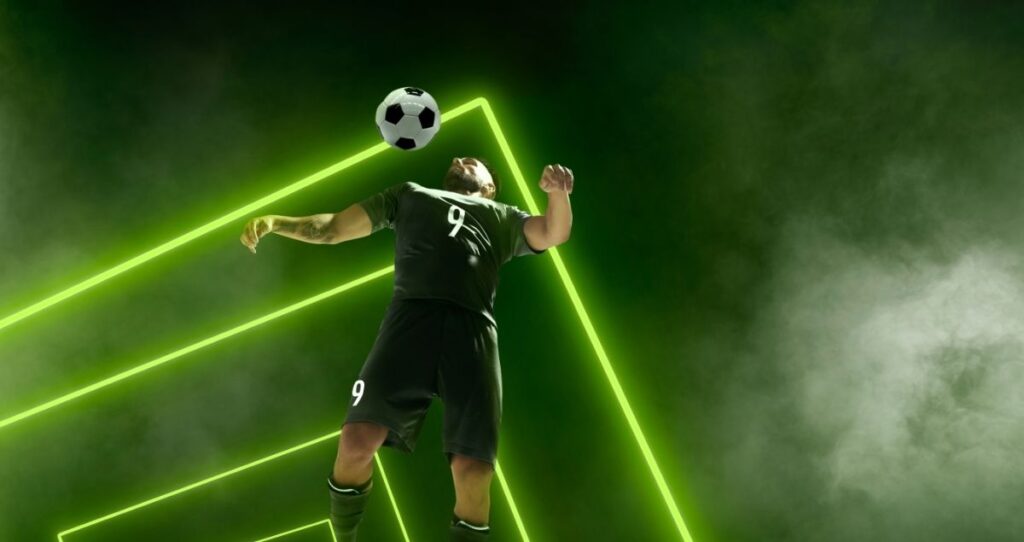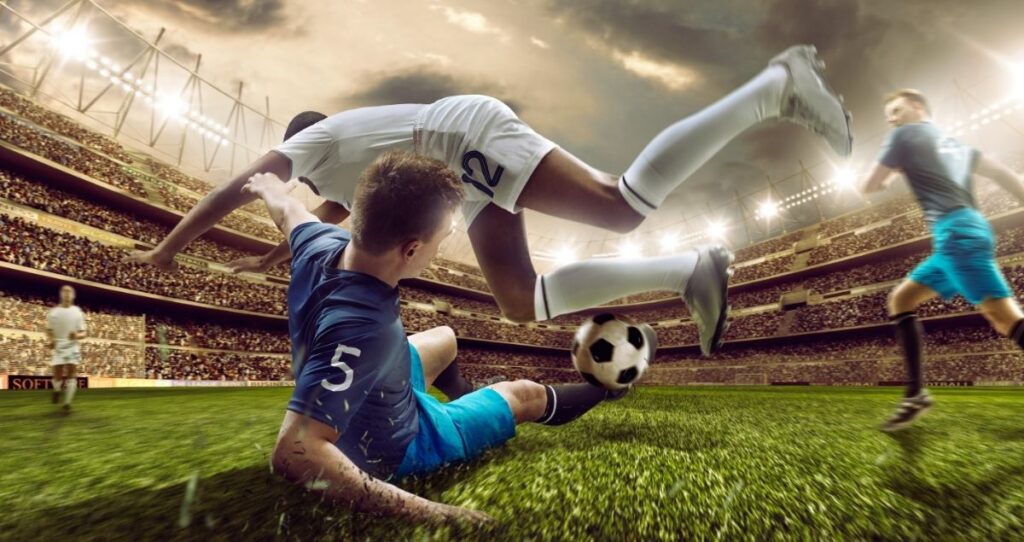Boost your betting experience and get up to $200 bonus right now!
The UEFA Nations League, since its inception in 2018, has stirred up quite a debate among football fans, pundits, and players alike. Designed to replace those seemingly endless international friendlies with competitive clashes, it promised to inject fresh excitement into national team football. Yet as the years roll on, one question remains: is the Nations League just another calendar filler or has it carved out its rightful place in the global football ecosystem? From thrilling finals and promotion-relegation dramas to player fatigue and fan engagement, the journey of this tournament reflects the evolving nature of football itself. Dive into the layers behind the hype, controversies, and the surprisingly impactful moments that have shaped this competition and continue to define its relevance in 2025.

Understanding the UEFA Nations League: Competition Format, Purpose, and Structure
The UEFA Nations League was conceived as a clever solution to a persistent problem in international football: meaningless friendlies. These fixtures often lacked intensity, offering little to fans or players while congesting an already packed calendar. UEFA’s answer was to group European nations into a league system based on strength and past performance, ensuring every match actually mattered.
Here’s how the structure neatly plays out:
- Four Leagues: Leagues A, B, C, and D arrange teams from strongest to weakest based on their UEFA rankings.
- Group Stage Matches: Within each league, teams face off in home-and-away round-robin formats, ensuring balanced and intense competition.
- Promotion and Relegation: The drama intensifies with the stakes of moving up or down between leagues, keeping pressure high throughout.
- Nations League Finals: The top performers in League A battle it out in a knockout mini-tournament to claim the title, lending the competition a Grand Slam charisma.
- Qualification Rewards: Beyond the trophy, success in the Nations League can provide alternative routes to the UEFA European Championship and FIFA World Cup qualification.
The genius behind this format lies in its dual purpose: competitive integrity and practical benefits. Teams gain the invaluable experience of facing similarly ranked opponents in meaningful matches, unlike the often lopsided friendlies of yesteryear. Fans get more intense football outside traditional tournament cycles, reigniting passion during those quiet international breaks.
| League | Description | Number of Groups | Typical Team Strength |
|---|---|---|---|
| League A | Top-ranked European teams competing for the Nations League title. | 4 | Heavyweights like France, Germany, Spain, England |
| League B | Teams ranked just below top tier, fighting for promotion. | 4 | Emerging strong teams and solid performers |
| League C | Mid-tier teams, balancing ambition and survival. | 4 | Smaller European nations stepping up |
| League D | Lower-ranked teams battling for a chance to climb. | 2 | Developing football nations |
For anyone eager to navigate the complexities of international tournaments, guides on game formats and competitions offer in-depth explanations that shed light on where the Nations League fits in the global puzzle.
Player and Fan Perspectives: Weighing the Physical Toll and Emotional Engagement
Behind the tournament’s promise of competitive football lies a narrative of players battling exhaustion and fans wrestling with their interest levels. As the football season cranks up with club commitments in iconic kits from Adidas, Puma, or New Balance, the arrival of the Nations League demands yet more from the players.
Prominent players like Kevin De Bruyne have candidly voiced concerns, describing the Nations League fixtures as “glorified friendlies” following grueling domestic and continental seasons. Their reservations are rooted not only in fatigue but also in the minimal rest periods that jeopardize player fitness.
Defender Virgil van Dijk echoed these worries, highlighting the risks of injury during the four-match international blocks. The recurring pattern reveals a clash between club priorities and national duty, with players donned in brands like Nike and Under Armour caught in the middle.
- Impact on Player Fitness: Condensed schedules increase injury likelihood and burnouts.
- Club vs Country Dilemma: Top European clubs often hesitate to release star players at full capacity.
- Fan Engagement Variability: While some diehard fans cherish every fixture, the broader audience often treats early Nations League matches as secondary.
- Marketing Influence: Sporting brands sponsoring the tournaments and kits play a subtle role in promoting player and fan involvement.
Fans’ passion is palpable during decisive League A clashes, especially when football legends sporting kits by Kappa or Umbro take center stage. Yet, during less headline-grabbing fixtures, attendance dips and media attention wanes, reflecting a complex emotional dynamic.
In this intricate balance, the Nations League faces a challenge: how to maintain competitive authenticity while respecting the physical limits of players after relentless seasons.
| Issue | Description | Stakeholders Affected |
|---|---|---|
| Player Fatigue | Players face exhaustion from limited rest between club and international duties. | Players, Clubs, National Teams |
| Fan Interest | Variable engagement depending on fixture importance and team popularity. | Fans, Broadcasters, Sponsors |
| Commercial Pressures | Brands like Reebok and Champion leverage exposure through sponsorships. | Players, Advertisers |
For deeper insights into how tactical decisions might influence player workload and team success in such tournaments, the analysis at RKT Football’s deep dive analysis is an invaluable resource.
Surprise Packages and Underdog Stories: How the Nations League Empowers Smaller Football Nations
The structure of the UEFA Nations League opens up avenues for smaller football nations like Iceland, North Macedonia, and Finland to punch above their weight on the European stage. By setting leagues based on performance and ranking, these countries find themselves matched against equal or slightly stronger competition, fostering growth and ambition.
This environment nurtures stunning upset victories, giant-killings, and spirited performances that often get lost in the shadow of traditional qualifiers and major tournaments. For grassroots football lovers and national supporters, these stories invigorate their passion and imbue a sense of pride.
- Increased Competitive Opportunities: Smaller nations get regular games against worthy opponents.
- Financial and Development Benefits: More important matches attract sponsorships, spectators, and TV rights.
- Talent Showcase: Rising stars can catch the eye of major clubs and scouts.
- Growth of Football Culture: Nations build stronger fan bases and infrastructure thanks to heightened visibility.
Such dynamics don’t just serve the underdogs; they contribute to a more exciting and unpredictable footballing landscape for Europe, which fans can explore through platforms covering global football growth.
| Country | Recent Nations League Achievement | Impact |
|---|---|---|
| Iceland | Promotion to League B after strong group performances | Boosted national morale and attracted attention from European clubs |
| North Macedonia | Notable draws and wins against higher-ranked teams | Raised team profile and FIFA rankings |
| Finland | Competitive matches with mid-tier European sides | Increased fan engagement and youth development investment |

Memorable Moments and Rising Stars: Nations League Highlights and Player Breakouts
The UEFA Nations League has been far more than a filler—it’s a stage of drama, individual brilliance, and team grit. The first edition offered unforgettable highlights: Portugal’s triumph in 2019, clinched by Gonçalo Guedes’ strike and led by Cristiano Ronaldo’s commanding presence, sent shockwaves through European football. England’s energetic run, capped by a dramatic penalty shootout win over Switzerland, hinted at the nation’s resurgence under Gareth Southgate’s calm leadership.
France’s dominance in subsequent Nations Leagues solidified their position as a European powerhouse. These tournaments have spotlighted not only established stars but also players on the cusp of greatness, many adorned in kits by Adidas, Nike, or Asics, bringing a fresh wave of talent to the international arena.
- Breakout Players: Underdogs from smaller nations seizing the moment.
- Classic Duels: Rivalries intensified by the stakes of promotion and finals.
- In-Game Drama: Last-minute winners, tactical masterclasses, and surprising reversals.
- Brand Influence: Sports apparel giants like Puma and Umbro prominently featured during defining moments.
Every match feels like a mini World Cup encounter with narratives weaving around the players’ journeys. For fans hungry for stories behind the goals, offbeat football tales provide a compelling read that adds layers of humanity and passion to each fixture.
| Year | Winner | Notable Player of the Tournament | Final Match Score |
|---|---|---|---|
| 2019 | Portugal | Cristiano Ronaldo | 1-0 vs Netherlands |
| 2021 | France | Kylian Mbappé | 2-1 vs Spain |
| 2023 | Italy | Federico Chiesa | 3-2 vs Belgium |
Why the Nations League Matters: Looking Ahead at its Role in International Football
As we move through 2025, the UEFA Nations League continues to evolve as an indispensable part of international football’s landscape. Its competitive format serves multiple stakeholders — players seeking tough tests, coaches experimenting ahead of big tournaments, and fans craving meaningful matches.
The tournament’s design also promotes sustained competition with its promotion and relegation system, ensuring that no team can coast. Smaller nations gain platforms to escalate their football programs and challenge traditional powerhouses. And with global football fashion brands such as New Balance, Reebok, and Champion ramping up sponsorships, the tournament also thrives commercially.
- Alternative Pathway: Nations League qualifications offer a backdoor to Euros and World Cup, amplifying stakes.
- Player Development: Coaches use it to test line-ups and tactics in realistic environments.
- Fan Engagement: Regular, meaningful fixtures boost viewership and passion.
- Commercial Growth: Sponsors and apparel brands get prime exposure, invested in football’s future.
Critics argue the tournament adds to player exhaustion, yet reforms focusing on schedule management could strike a better balance, safeguarding the integrity of the game. It’s worth remembering that football thrives on stories — the rivalries, the upsets, the human emotions that the Nations League has begun to deliver in earnest. For fans keen to keep track of international fixtures and transfer updates, sites like RKT Football’s dedicated section are excellent companions.
| Benefit | Details | Impact |
|---|---|---|
| Competitive Balance | Teams play opponents of similar caliber | More exciting matches and fair contests |
| Development Opportunities | Smaller teams get platforms to grow | Broader football development across Europe |
| Commercial Interest | Strong branding and sponsorship involvement | Financial sustainability and event promotion |
| Fan Engagement | More frequent meaningful matches | Heightened viewer interest and loyalty |
FAQ: Key Questions About the UEFA Nations League
- What is the Nations League’s main purpose?
To replace non-competitive friendlies with meaningful, competitive matches among European national teams organized by ranking-based leagues.
- How does promotion and relegation work?
Teams finishing top in their groups in Leagues B, C, or D earn promotion to a higher league for the next tournament cycle, while bottom teams in Leagues A, B, and C get relegated.
- Does the Nations League affect qualification for major tournaments?
Yes, it provides alternative qualification routes for the UEFA European Championship and FIFA World Cup, adding extra incentives for teams.
- Are players supportive of the Nations League?
Opinions vary — some appreciate the competitive fixtures, while others are concerned about physical strains after long club seasons.
- Where can fans watch Nations League fixtures?
Matches are broadcast across various platforms, with detailed schedules and results available at RKT Football’s competitions and fixtures page.
Join today and grab up to $200 bonus for your next bets!
Content assisted by AI. This article was created in whole or in part with the help of artificial intelligence.